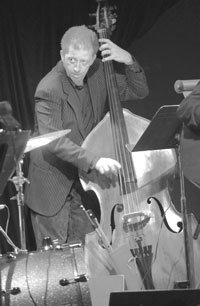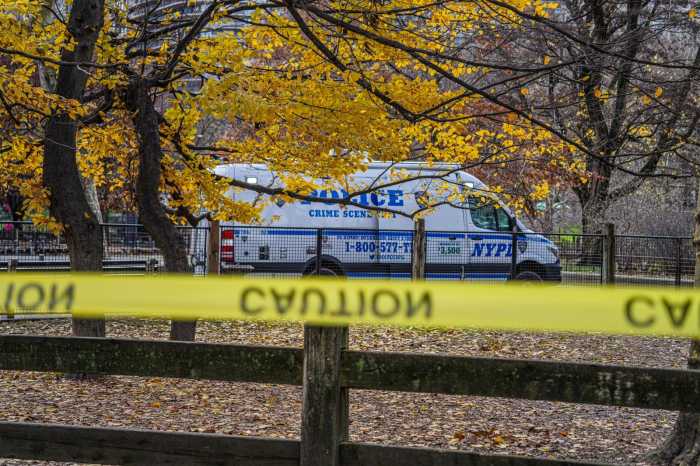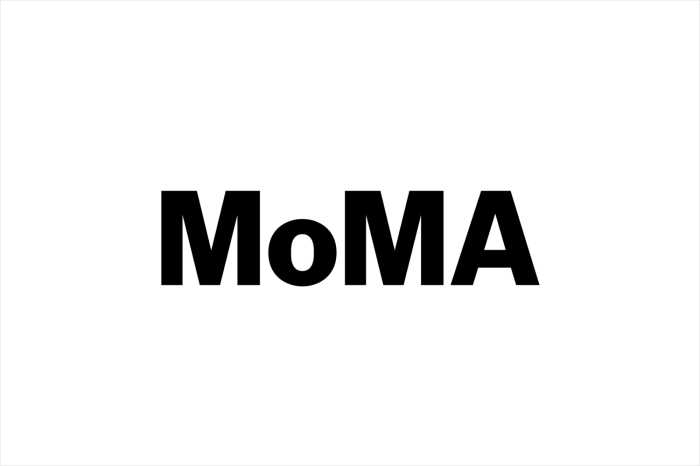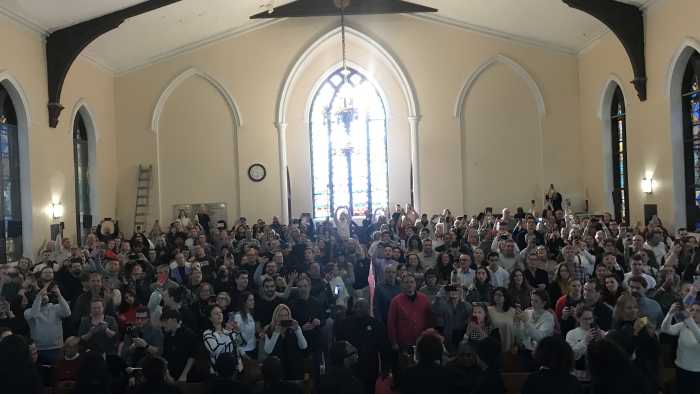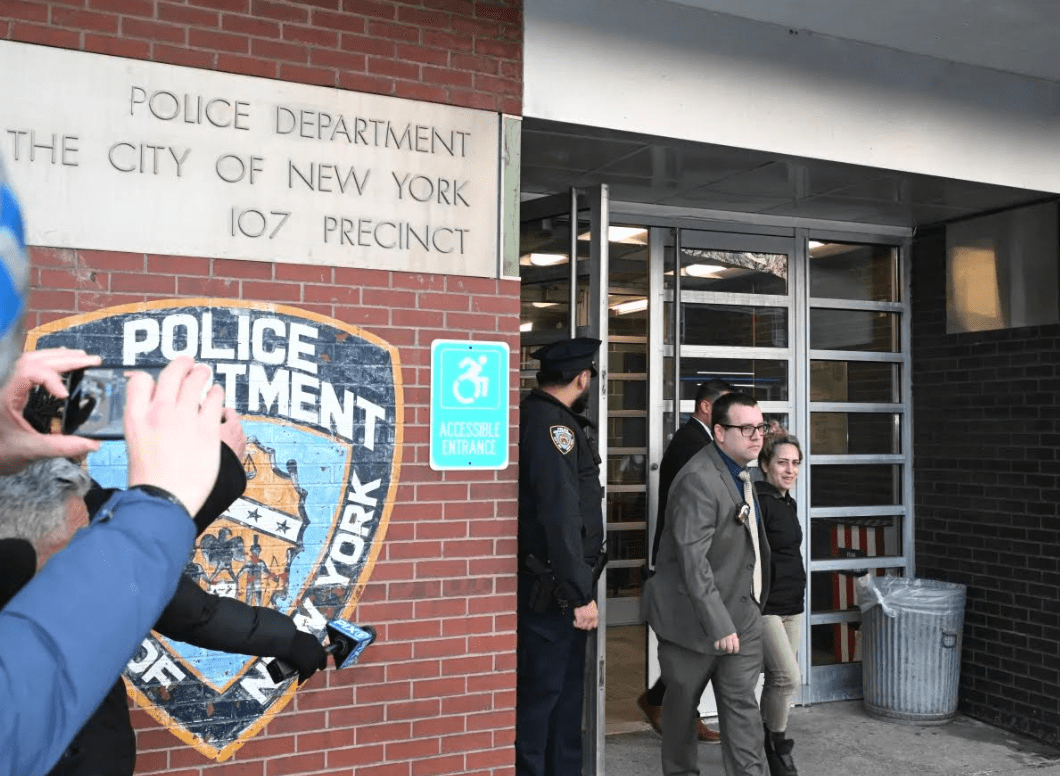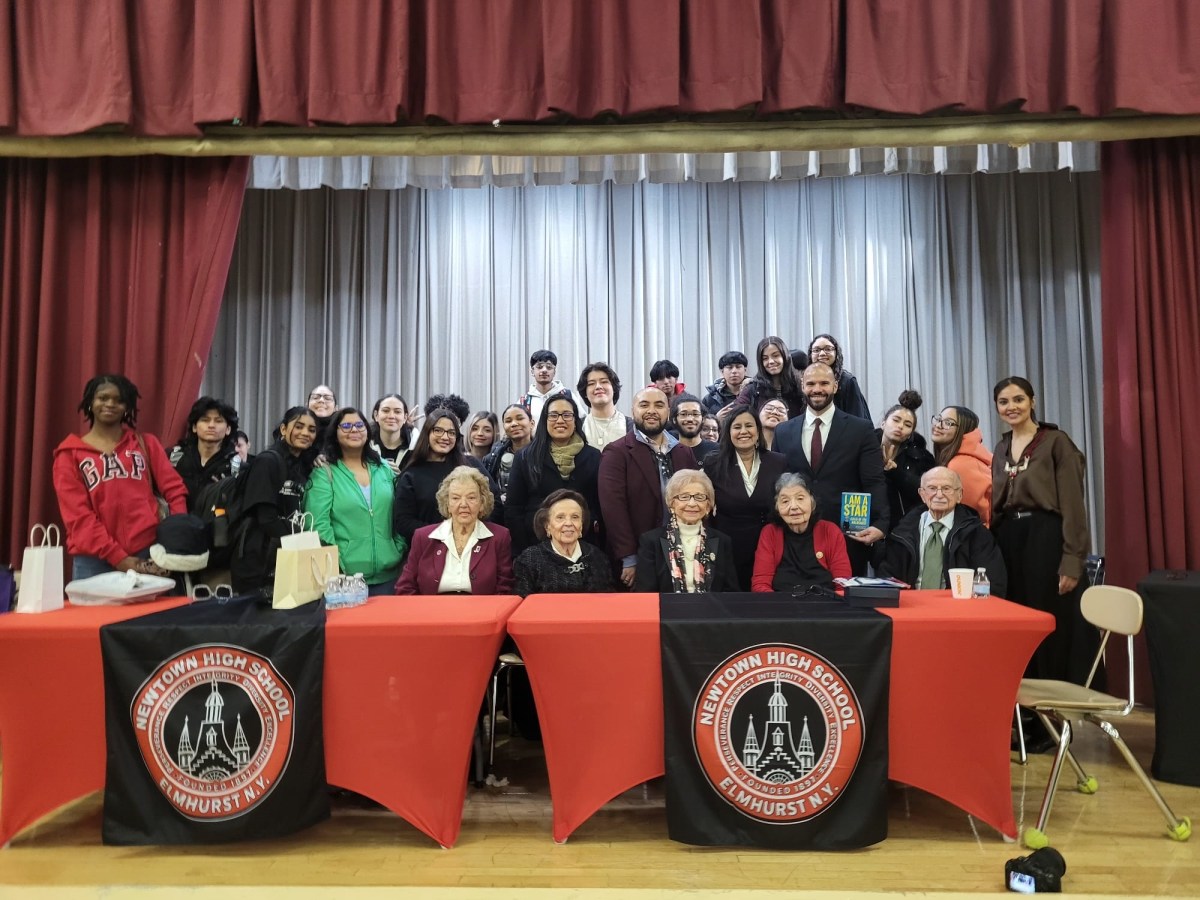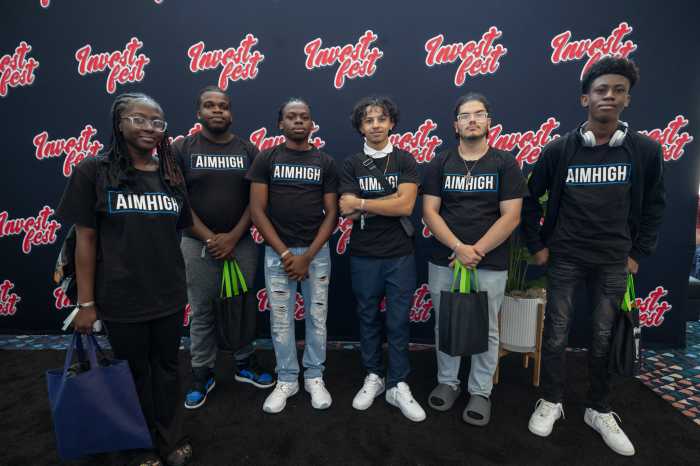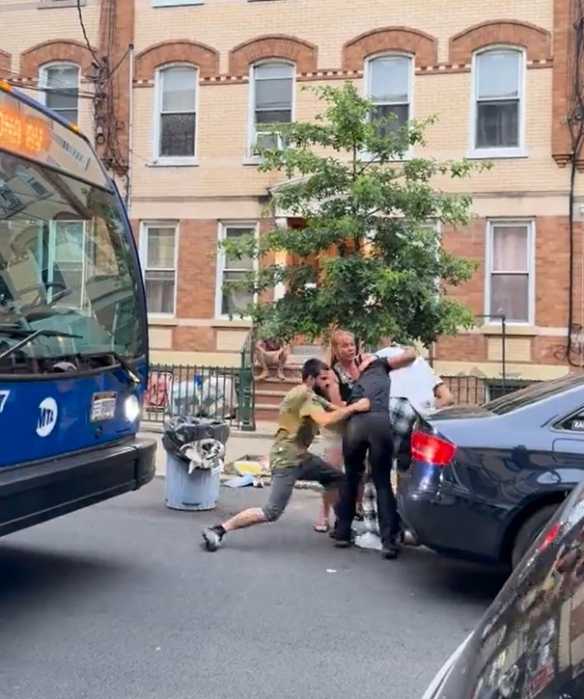By Lincoln Anderson
David Johansen and his band, the Harry Smiths, had settled into a smooth bluesy groove. The song was something about a love affair and a ride on the F Train and making out on the beach in Coney Island.
In a voice part Satchmo, part Dylan, Johansen circled back to the perfect-hook refrain — “Let’s rock!… Yeah, let’s rock!” The Harry Smiths kept the steady beat on guitars, standup bass and drums. The audience was transported — to that beach, maybe, to that embrace, definitely to somewhere cool. “Da-vid!” someone shouted in approval. It was one of the best songs of the set, mostly covers of traditional blues songs.
Johansen was performing at the Bottom Line on W. Fourth St. last Friday night, where he’s played many times in a career that has seen him go from tran/glam rock, as the lead singer of the cross-dressing New York Dolls in the 1970s, to cabaret character Buster Poindexter to Spanish Buster Poindexter to bluesman.
Johansen and Allan Pepper, the 30-year-old club’s co-owner are friends, and it was Pepper who originally suggested Johansen take a blues direction.
“This stage has been a space for him to experiment, to grow, to do creatively whatever he decides to do,” Pepper said, after the show. “You have to have a place where you can do that. We nurture artists that have been around — seasoned artists. You have to have respect for the veteran acts.”
“He’s been a very good influence on me as a person,” Johansen said of Pepper, after the set. “He’s seen me through a lot of phases. I wasn’t always as upstanding as I am today. When the New York Dolls played here, there was a bomb scare and we wrecked the dressing room and he told me we’d never come back….
“This band probably wouldn’t be here if it wasn’t for Allan,” Johansen said, noting the Harry Smiths were formed for the Bottom Line’s 25th anniversary show, and “I dug it so much, I kept it.
“In New York, this is like the only place I play,” the singer continued. “I think it’s one of the last great places where you can sit and listen to great music. I’m so comfortable on that stage, because I’ve been there hundreds of times.”
Some, however, think the Bottom Line books acts that are a bit passé and caters to an older crowd. But Pepper noted that The Thrill, which he described as “probably the biggest breaking band in Ireland right now,” would be playing that Monday.
Yet there were only about 70 people at Johansen’s show, leaving many empty seats in the 400-person-capacity club.
Asked about the light crowd, Pepper said you never know how an act — old or new —will draw. “Every night is a crapshoot,” he said.
Whether the Bottom Line remains a place for established acts to experiment or new acts to make their mark, though, is uncertain, as New York University continues its litigation to collect rent arrears of $185,000 from the club and possibly evict it. The ongoing case was heard by Judge Donna Recant last Thursday, who said she would make a decision within 30 days.
Last month, Sirius Satellite Radio agreed to pay the $185,000 back rent, but only if the university gives the club a 10-year lease. The Bottom Line also agreed to pay a higher rent as well as raise money for renovations to make the club more profitable.
Yet, speaking last Thursday outside the courtroom, N.Y.U. spokesperson John Beckman said there was still an impasse because, “They don’t want to abide by the figure they cited for market-rate rent. And they’re not abiding by the figure for renovations they cited.”
N.Y.U. says the amount agreed to for renovations was $1.5 million; Pepper says $1 million. Pepper added that in lease negotiations three years ago N.Y.U. demanded only $350,000 in renovations.
As of last Thursday morning, the club had raised several hundred thousand dollars, thanks to offers from Bruce Springsteen and Viacom president Mel Karmazin. SONY was also planning to make an offer, while Snapple and the club have agreed to an exclusive endorsement deal, according to lawyer Mark Alonzo.
As the hearing was getting underway, Bottom Line supporter deejay Meg Griffin was calling on her cell phone to Howard Stern’s radio show, making on-air pleas for cash. They still needed $650,000, she was saying.
“We’d like to have had $1 million. We didn’t raise all of it,” Griffin told The Villager. “We felt if we came in here with $1 million, there wouldn’t be a problem.”
Due to interest generated from the publicity on the Stern show, on Monday the club set up a Web site, www.savethebottomline.com, to accept small donations from people “who don’t have Springsteen money,” said Jessica Herman Weitz, Pepper’s assistant. After just one day, the small contributions totaled several thousand dollars.
There’s also the rent issue. Currently the club pays about $11,000 per month for 5,000 sq. ft., which Pepper admits is half market rate. However, Pepper says they can’t afford to pay the $65 per sq. ft. N.Y.U. is asking. But Beckman said that’s the figure Alonzo gave last month outside the courtroom when asked for a reasonable figure. Alonzo denies he said it; Pepper said he didn’t hear it.
Beckman said the university sent Alonzo a lease 10 days after the Sept. 23 negotiations, but that Alonzo never returned it marked up with any objections. But Pepper said the lease’s conditions were too unreasonable.
Alonzo pointed out that N.Y.U. as a nonprofit institution pays scant real estate tax on the seven-story building in which the Bottom Line occupies the ground floor — an amount “less than what a two-family house pays in Queens,” he claimed.
Councilmember Alan Gerson buttonholed N.Y.U.’s Beckman outside the courtroom last Thursday. Rather, Gerson listened as an exasperated-looking Beckman explained why N.Y.U. had lost patience with the Bottom Line.
“Lousy,” Gerson responded, asked how their discussion had gone. Gerson released a statement in support of the club, to be submitted in court:
“The Bottom Line cabaret is a vital, functioning, historical link to all that is good about Greenwich Village,” Gerson said. “As their landlord, New York University should be acting in good faith to come to some equitable solution that meets the needs of both institutions…. N.Y.U. should be able to accept a more conservative renovation commitment, especially since only three years ago, it requested only $350,000 in renovations.” Gerson also noted that the rent increase the university was asking for represented a “250 percent increase.”
Working together, the councilmember added, the Bottom Line and N.Y.U. might be able to obtain public funds, grants or loans, especially considering 9/11’s impact on the club’s business.
Like Alonzo, Gerson also referred to N.Y.U.’s special tax status, noting, “The compact that N.Y.U. has with the taxpayers implies that it should be dedicated to the educational and cultural enrichment of its students and the community.”
Asked last Friday night if he had anything to say to N.Y.U., Johansen said, “Yeah! You know, like show a little compassion towards culture. Culture’s important.”
Johansen pronounced it “cultchyah,” like the true native New Yorker he is.
“This is a bastion of culture here,” he said.
In the audience, Bernie Rosman, another native New Yorker, who had flown in from California, said he always checks out a few acts at the Bottom Line whenever he’s in town. An ex-hippie who went west in search of the counterculture, he recalled when the Bottom Line was the Red Garter, a sing-a-long bar where Marines and Army soldiers would brawl over which song to do. Last Friday night’s light turnout concerned him; one of his favorite musicians would be in the city in a few months and Rosman hoped he’d get another chance to see him at the club.
“This group deserves a better crowd,” Rosman said of Johansen and the Harry Smiths. “I definitely hope the Bottom Line stays open. But I can see from the way it’s going — I don’t know if it’s going to happen. I hope I make it back in February to see David Bromberg.”
One of the Harry Smiths.



